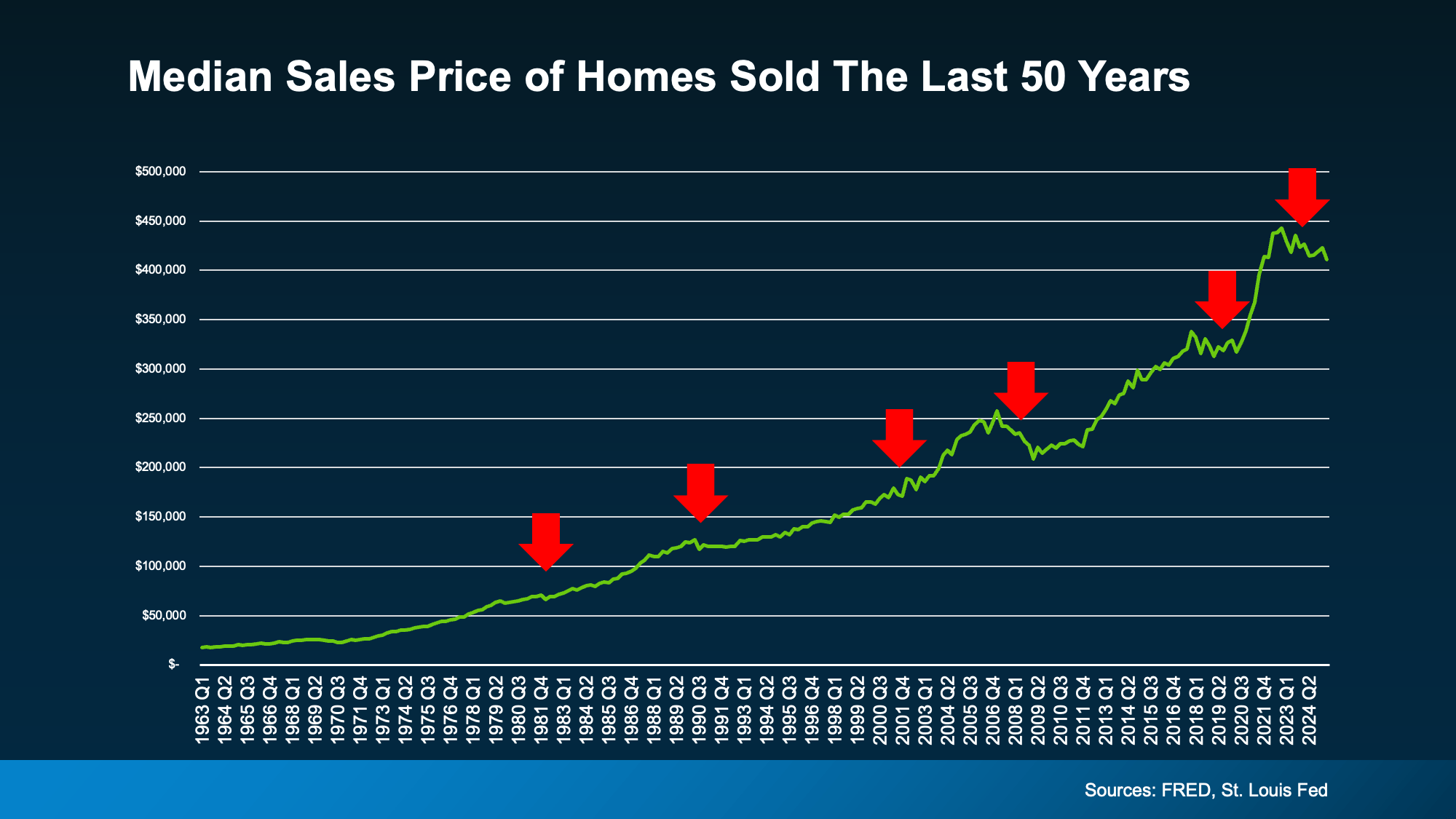Main Content

Real estate cycles can feel unsettling when headlines focus on slowdowns and price dips. But history tells a different story: every cooling period sets the stage for the next climb. Looking back at six decades of U.S. housing data, we see a consistent truth—downturns are temporary, and recoveries are inevitable.
 The chart above (source: FRED, St. Louis Fed) tracks the median sales price of U.S. homes from 1963 to today.
The chart above (source: FRED, St. Louis Fed) tracks the median sales price of U.S. homes from 1963 to today.
Red arrows highlight every major slowdown or recessionary period:
- Early 1980s recession
- Early 1990s slowdown
- Early 2000s dot-com/9-11 dip
- 2008 Great Financial Crisis
- 2020 COVID disruption
- And the current 2024–2025 cooling phase
Despite these dips, the green trend line climbs steadily upward over six decades. The message is clear: short-term declines have never stopped long-term growth in home values.
Learning From Past Cycles
Consider the two most dramatic downturns:
- Early ’80s recession: Home sales fell from 4 million to 2 million—a 50% drop—but recovered within four years.
- Great Financial Crisis (2008): Sales dropped from 7 million to 3.5 million—a 51% decline—but rebounded in three years.
COVID’s brief disruption in 2020 also followed this pattern: a sharp dip and an equally strong rebound.
These historical markers prove that every drought in housing eventually turns to growth.
Today’s Market: Where We Stand
Now, in late 2025, we’re in another cooling period:
- Home prices are mostly flat or slightly down.
- Mortgage rates are drifting lower—but slowly.
- Remember the adage: “When mortgage rates go up, they take the escalator. When they come down, they take the stairs.”
That’s exactly what we’re seeing today.
Current forecasts point to roughly 4 million existing-home sales for 2024 and 2025, with 4.5 million projected for 2026—a sign that recovery is already taking shape.
Looking Ahead: 2026 and Beyond
The Home Price Expectation Survey, which aggregates both optimistic and conservative forecasts, shows consensus in one direction: up.
Expectations include:
- Gradual price appreciation as we enter 2026
- Sustained buyer demand as mortgage rates ease
- A rebound in existing-home sales volume, fueling renewed market energy
In other words, the market’s long-term fundamentals remain strong.
Takeaways for Buyers and Sellers
- Sellers: Today’s slower market is temporary. Well-priced, well-marketed homes will still sell—and likely at higher values in the next cycle.
- Buyers: Slightly lower prices and more negotiating room create an opportunity before appreciation resumes.
Bottom Line
History is unambiguous: every housing downturn ends in a recovery.
Whether recovery takes eight months, three years, or four years, the overall trajectory of U.S. home prices continues upward.
The key is perspective. By staying focused on long-term fundamentals—steady demand, limited inventory, and the enduring value of homeownership—buyers and sellers can make confident decisions even in a cooling market.

















